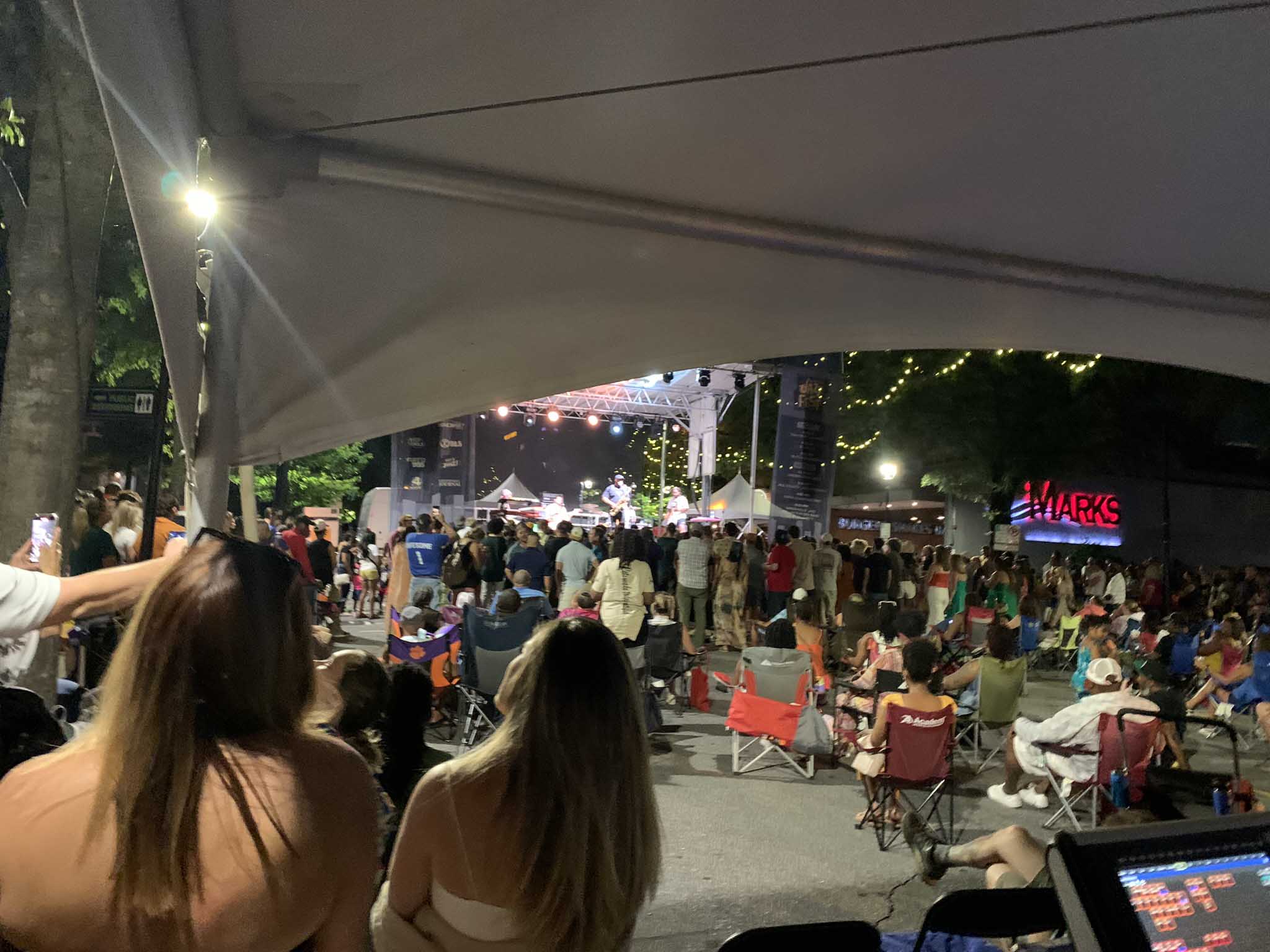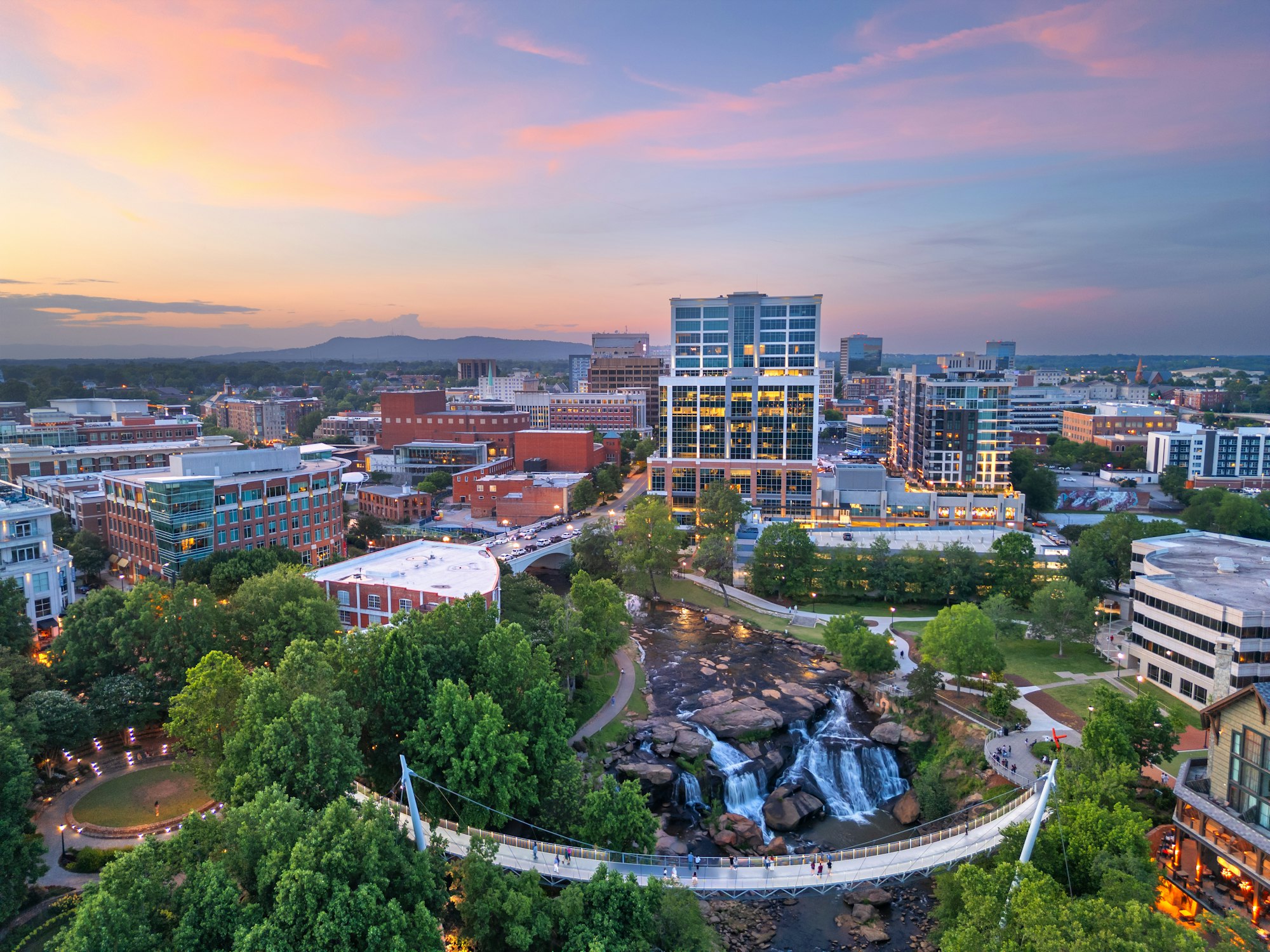f it feels like there’s a new construction project on every corner and more folks on the streets than a few years ago – you’re not imagining things. Greenville is growing at a rapid pace. In fact, it’s one of the fastest-growing areas in South Carolina (and even the broader Southeast region) in recent years. Let’s delve into just how fast and what that growth looks like:
-
Population Growth: We touched on some stats earlier – Greenville County’s population increased every year from 2010 to 2022, averaging about 1.6% growth annuallystudycountry.com. That might sound like small change, but compounding yearly, it’s quite significant. From 2010 to 2022, the county added roughly 95,000 people, which is a 27% jumpworldpopulationreview.com. The growth actually accelerated around 2015 onwards as the economy picked up and word got out about Greenville’s livability. The early 2020s in particular have seen big influxes – for example, that 2.5% growth between 2021 and 2022studycountry.com was one of the largest single-year jumps, equating to around 14,000 new residents in just that year. So if you meet a lot of newcomers around town, now you know why! The City of Greenville proper has grown too – the city’s population is up roughly 4% since the 2020 Censusworldpopulationreview.com, which is considerable for a city that was fairly built-out. The metro area overall is projected to cross the 1 million mark soon (if it hasn’t by the time you read this). So yes, Greenville is expanding, and quickly at that.
-
Economic & Job Growth: Hand in hand with population, the economy has been booming. Greenville has become a bit of an economic hotspot, attracting both large companies and small startups. The manufacturing and automotive industry have a big presence (Michelin North America’s HQ is here, BMW’s huge manufacturing plant is just down the road in Spartanburg County), and that sector continues to expand with suppliers etc. But beyond that, tech and innovation companies have been moving in, healthcare is expanding (Prisma Health is one of the largest employers), and the hospitality/tourism sector has grown with the downtown renaissance. You might have heard Greenville called “Charlanta” jokingly – indicating it’s growing into a mini version of the larger Southern cities. The job market here is strong; unemployment has generally been below national average. Many people from rust-belt states or crowded cities have come for jobs in engineering, IT, education, etc. Forbes and other outlets have listed Greenville among top small cities for jobs and business. This economic growth fuels population growth – people come for work opportunities and end up staying for the lifestyle.
-
Construction and Development: Take a drive around, and you’ll see the signs of growth everywhere. New housing subdivisions are popping up on former farmland in the suburbs. Cranes dot the downtown skyline with new mid-rise condos, hotels, and office buildings under construction. The once sleepy West End district downtown now has new mixed-use developments (like the Camperdown development with an AC Hotel, apartments, and office space that opened recently). Unity Park, a massive new 60-acre park on the west side of downtown, opened in 2022 – a direct result of Greenville’s commitment to smart growth, giving new recreational space to a growing population. The city and county are investing in infrastructure too: roads are being widened (though admittedly traffic can still get congested at rush hour – growing pains!), the airport expanded, and new schools are being built or enlarged to accommodate more students. There’s also visible growth in surrounding towns like Mauldin, Simpsonville, Greer – once small towns, now thriving mini-cities themselves as part of the metro area. Downtown Greer for example got a facelift and new developments due to the momentum from the larger region.
-
Demographic Changes: With the growth, Greenville’s demographics are diversifying. We’re seeing an influx of younger professionals, families, and also retirees from all over. Internationally, the presence of companies like BMW and Michelin means there’s a small but vibrant international community (you’ll hear some French and German accents around due to those companies). The Hispanic population in the county has also grown, contributing to diversity of culture and food (the county is about 10% Hispanic now and rising). It’s safe to say Greenville isn’t the homogeneous Southern town it once was; it’s becoming more cosmopolitan each year.
-
Rankings and Buzz: Greenville’s growth has caught a lot of attention. Aside from the “Best Place to Live” ranking we mentionedspectrumlocalnews.com, it often features in articles about up-and-coming cities. The U.S. Census a couple years ago noted the Greenville metro as one of the fastest-growing in the country in percentage terms. All this buzz does create a bit of a feedback loop – the more people hear about Greenville, the more they consider moving here, and so on. City planners have estimated that by 2040, the county could have 600,000+ people or more. Watching that growth, local leaders are working on plans (like Greenville’s “GVL2040” comprehensive plan) to manage expansion, focusing on things like affordable housing, green space preservation, and transportation.
-
Challenges of Growth: While growth is mostly positive (jobs, amenities, etc.), it does come with challenges that locals are very much aware of. Traffic has increased – some roads that were fine 10 years ago are now pretty busy, prompting new freeway interchanges and road widenings. Housing prices have climbed – still reasonable, but higher than they used to be, and there’s concern about affordability for some long-time residents. Infrastructure like sewer and utilities have needed upgrades to handle more capacity. Greenville’s doing a balancing act: encouraging growth and investment, while trying to keep that charm and livability that attracted people in the first place. So far, many would say they’ve done a good job – downtown’s growth, for instance, has been thoughtfully done, mixing historic preservation with new development. But it’s an ongoing conversation here about how to maintain quality of life amid the boom.
To give a tangible sense of growth: If you left Greenville in, say, 2005 and came back in 2025, you might barely recognize parts of it. Streets that once had empty warehouses are now lined with cafes and condos. The skyline has a few new shiny buildings. The Woodruff Road area (big retail corridor) has exploded with new shopping centers. It can be surprising! However, the city has also worked to protect what people love – the tree-lined Main Street, the beautiful park spaces, the friendly community feel. Those core things haven’t changed, they’ve just gotten shared by more people.
In summary, Greenville is growing – fast and smart. It’s exciting to be a part of a city on the rise, and that energy is palpable when you talk to locals. We’re proud that our “little” Greenville is making waves and becoming a destination in its own right. Just be ready to be patient with some construction and to perhaps see new faces in your neighborhood frequently. It’s all part of growing up – Greenville is stepping confidently into its future as a major Southern city while striving to keep its soul intact.




